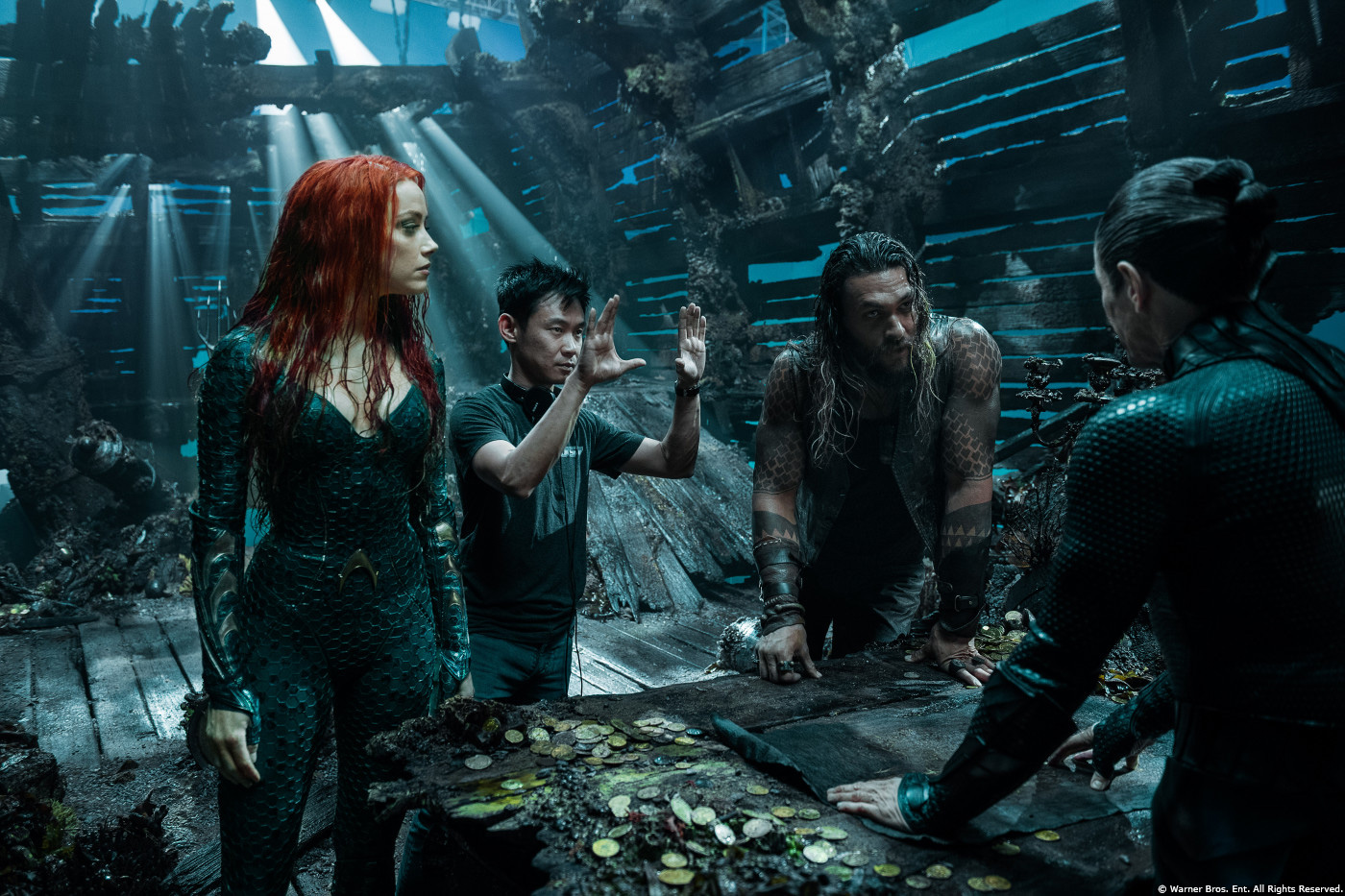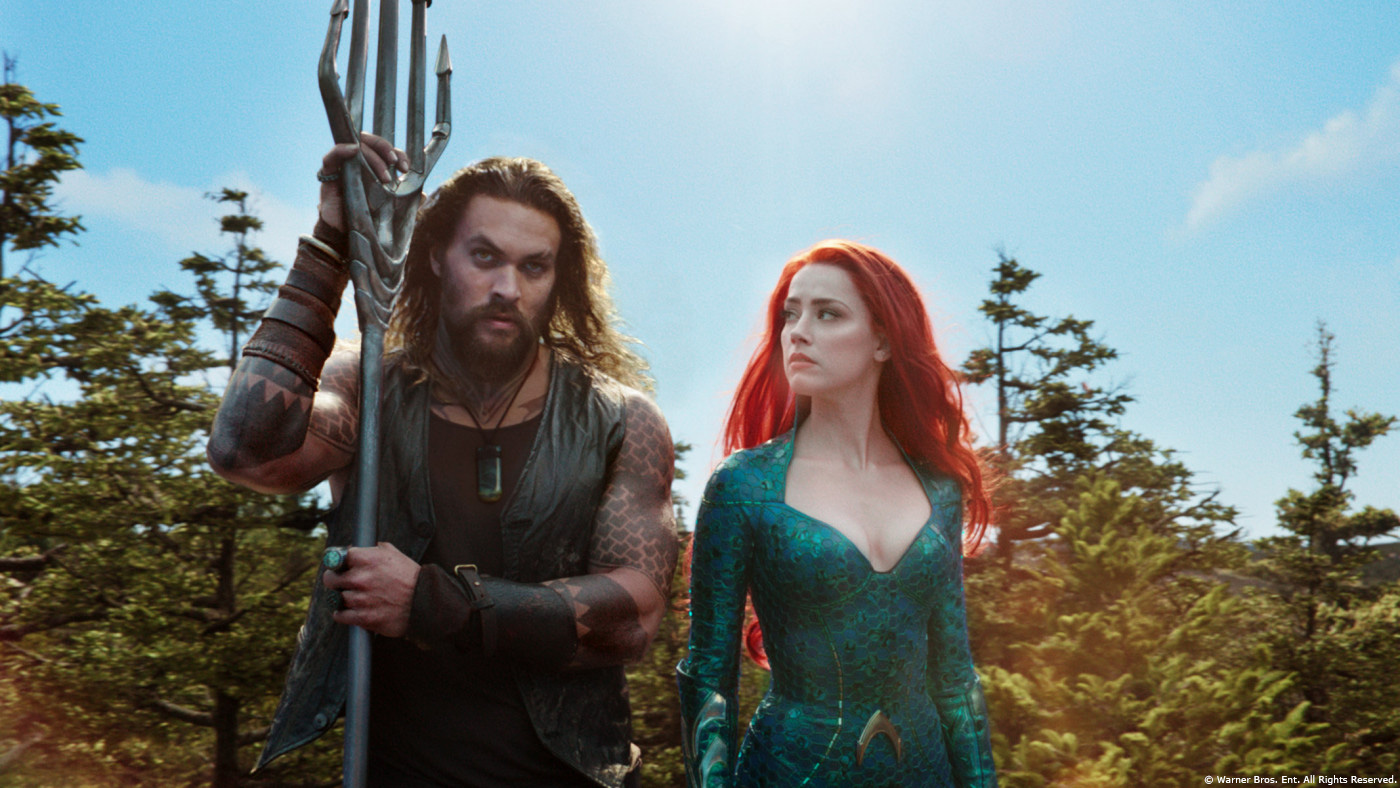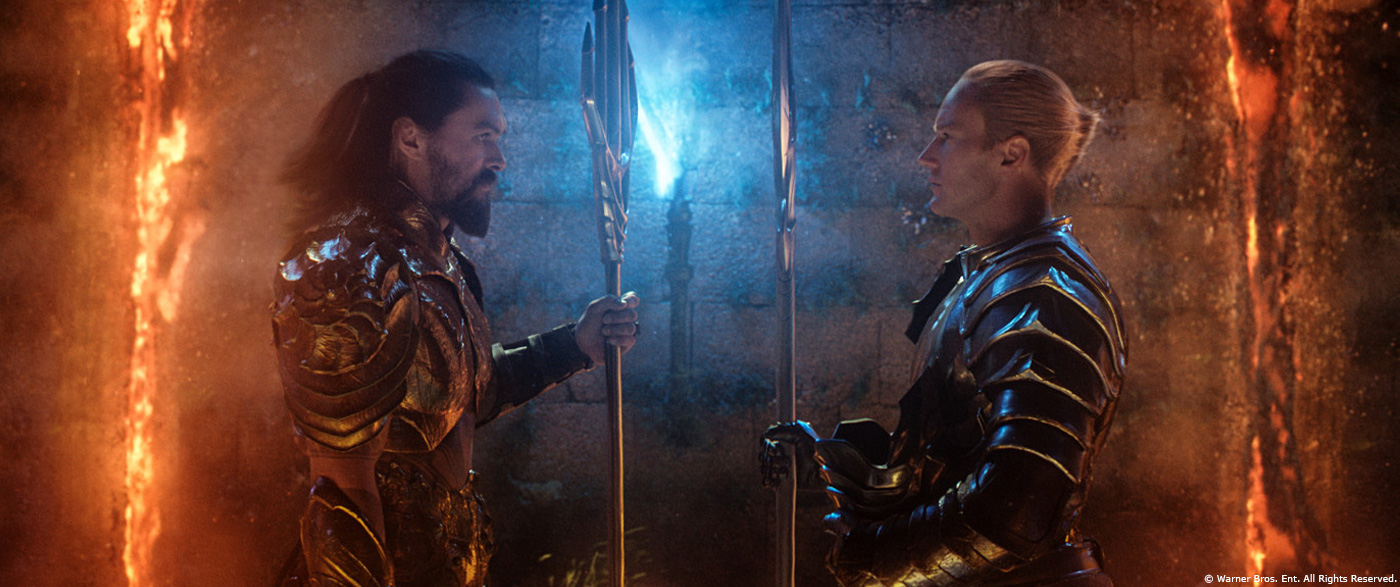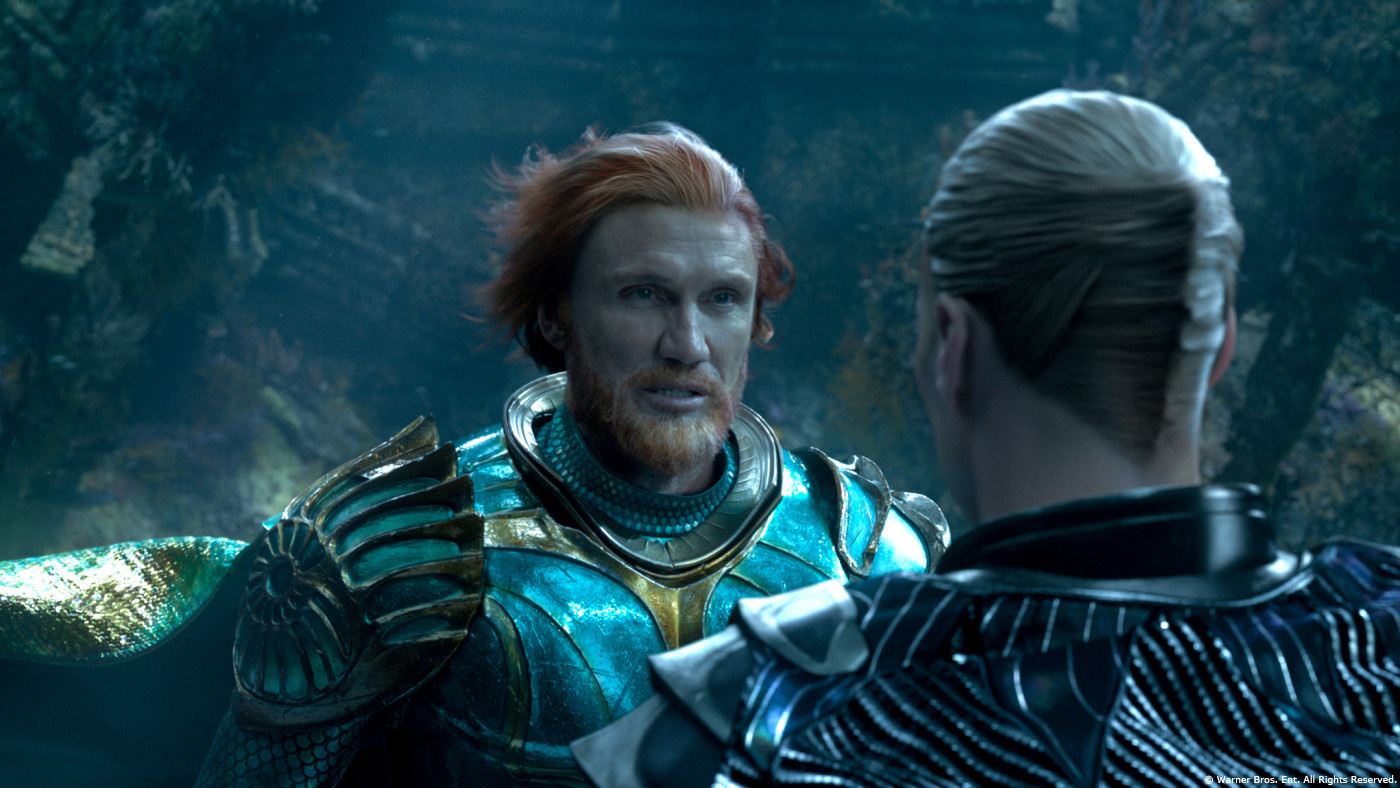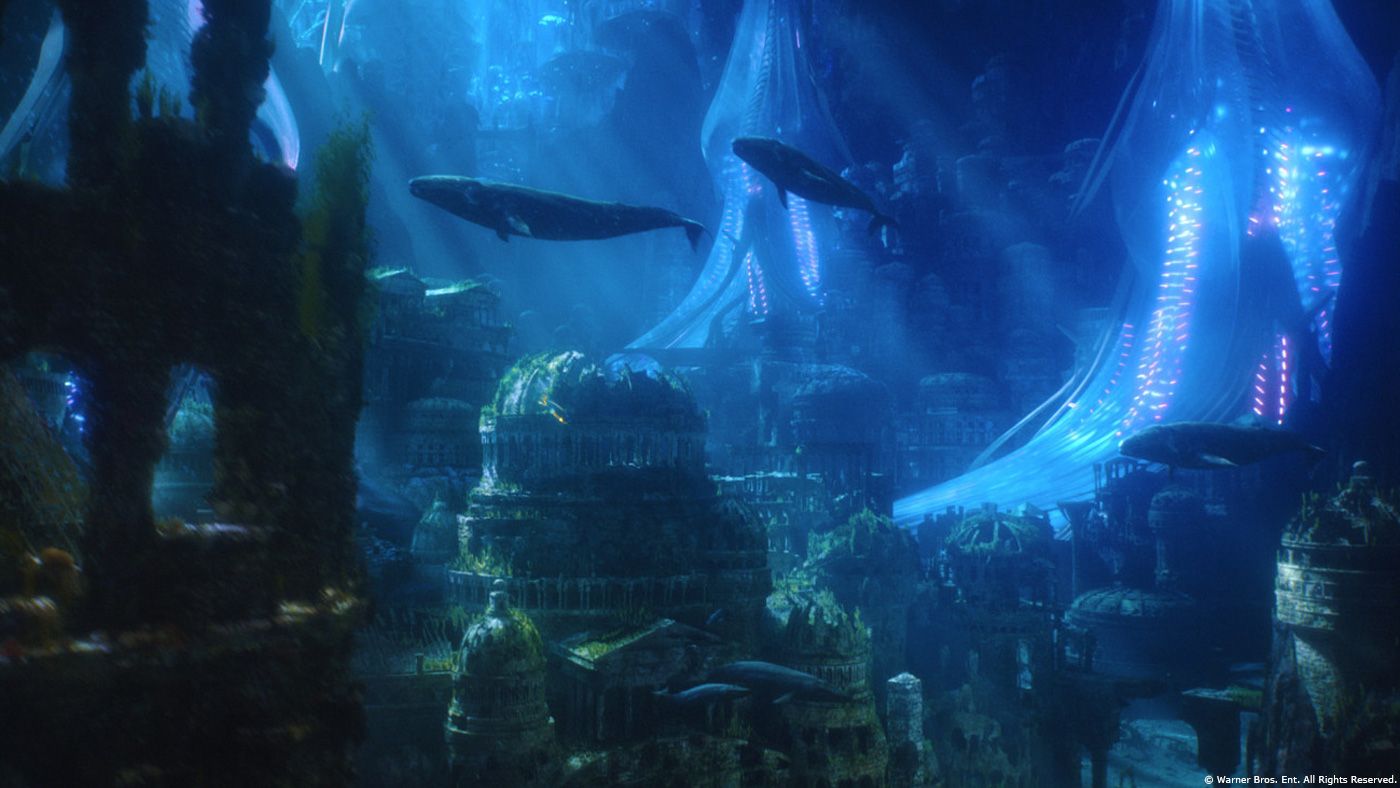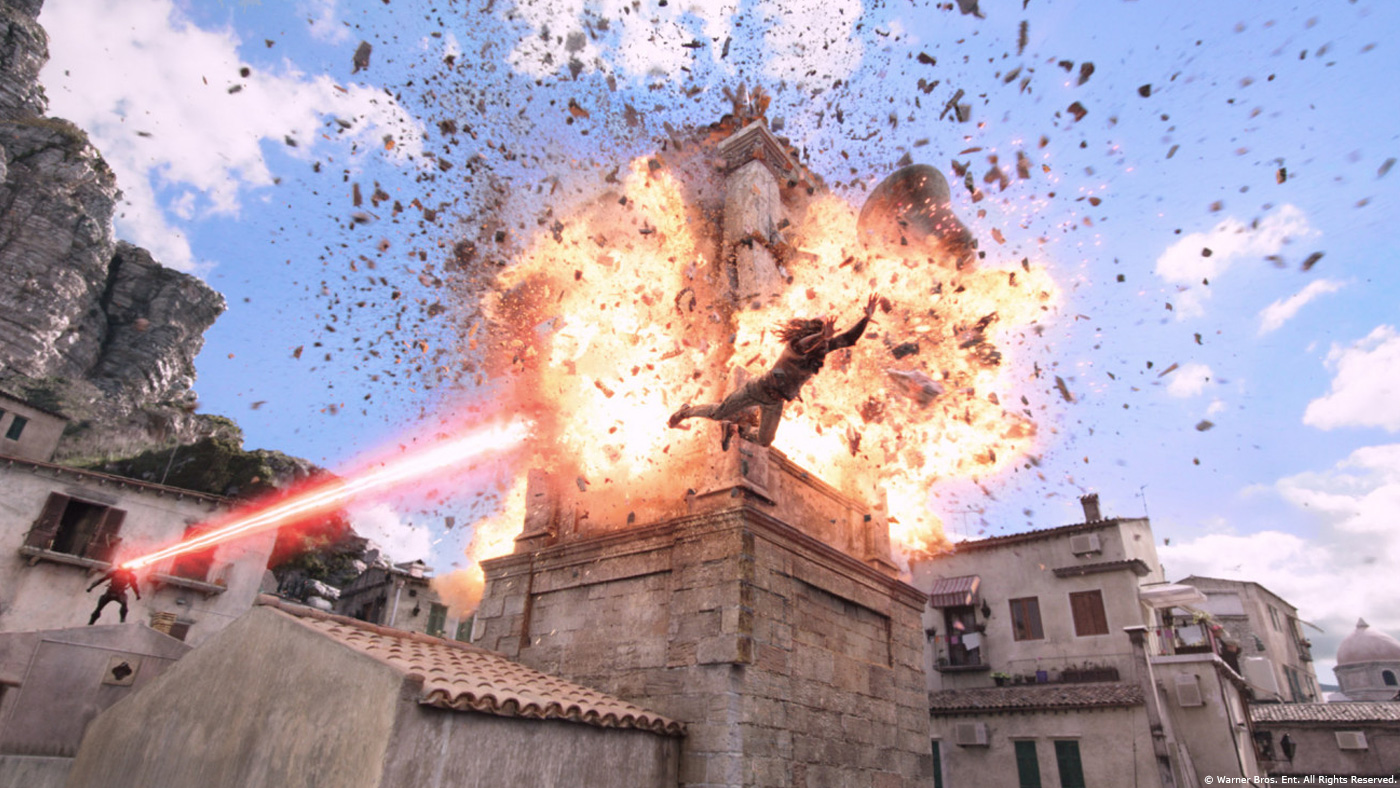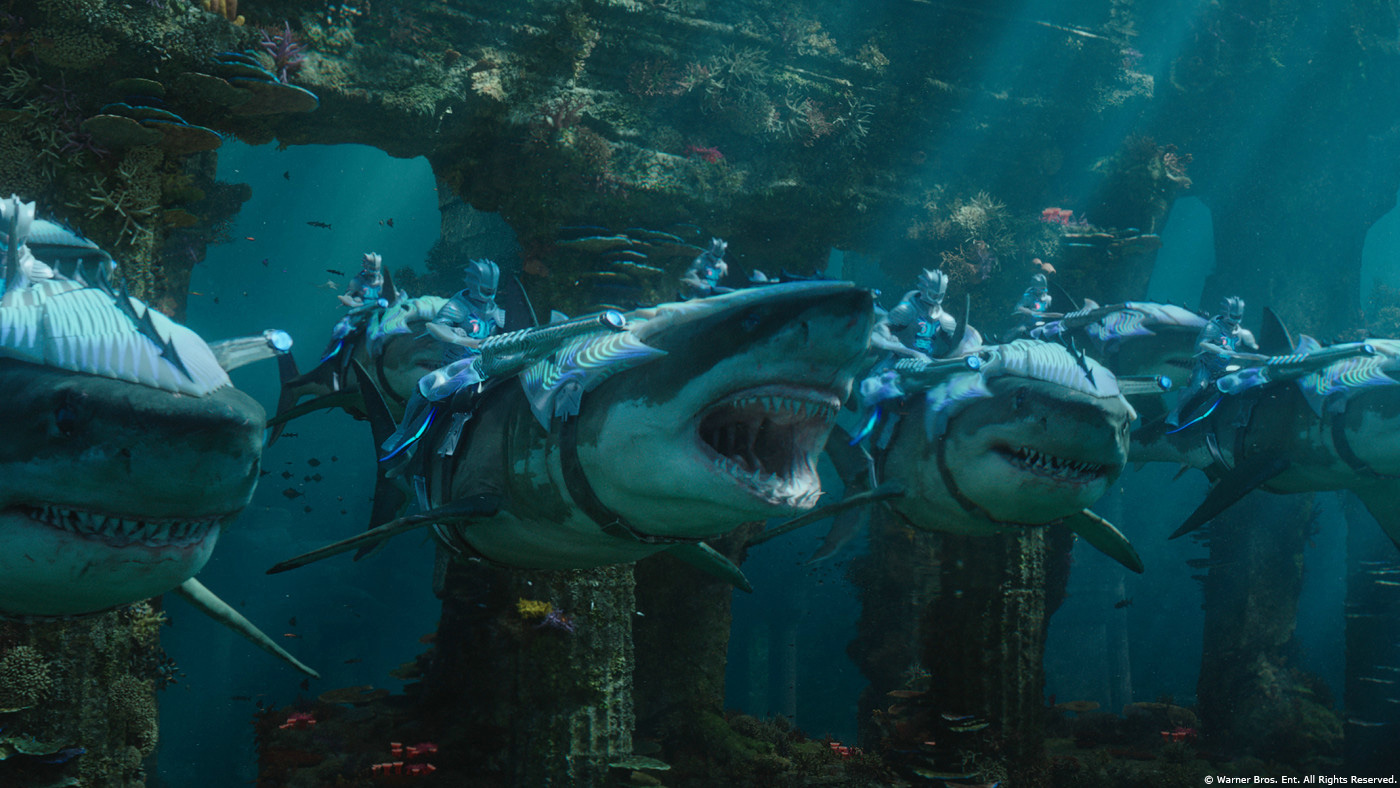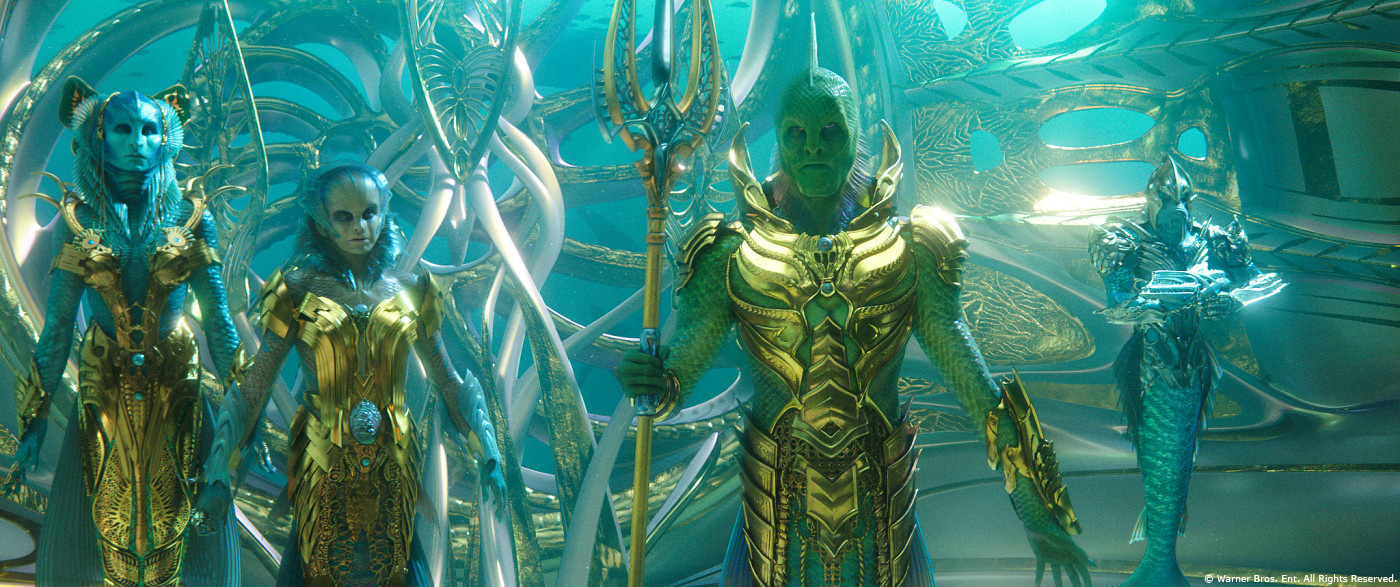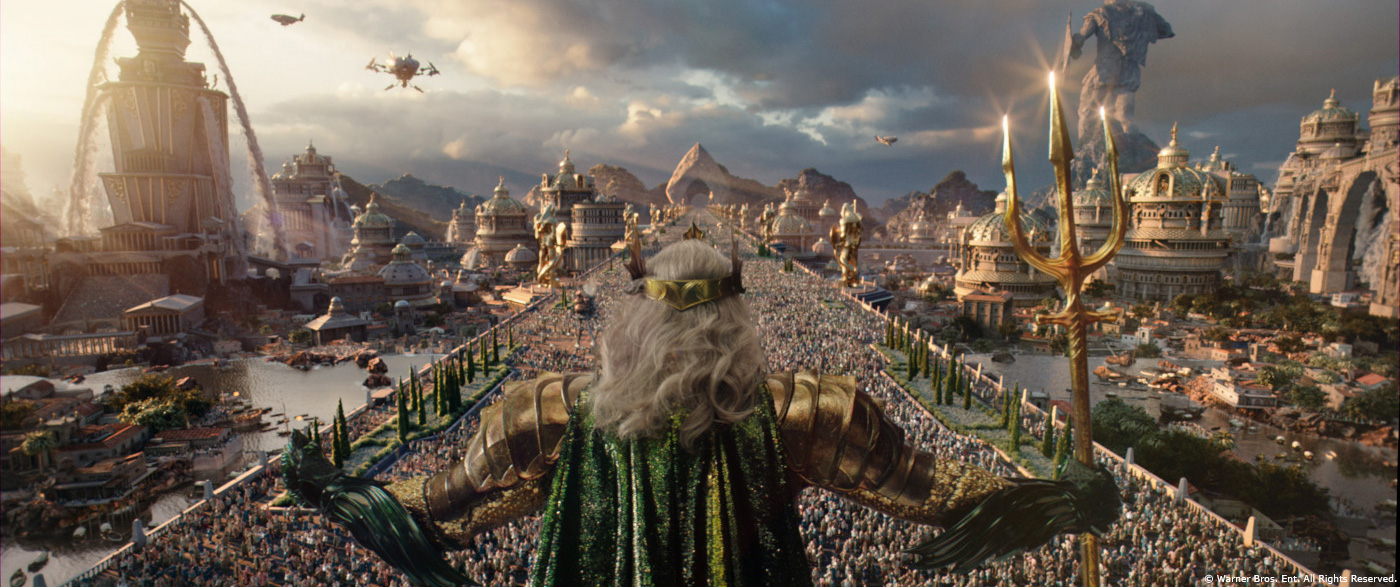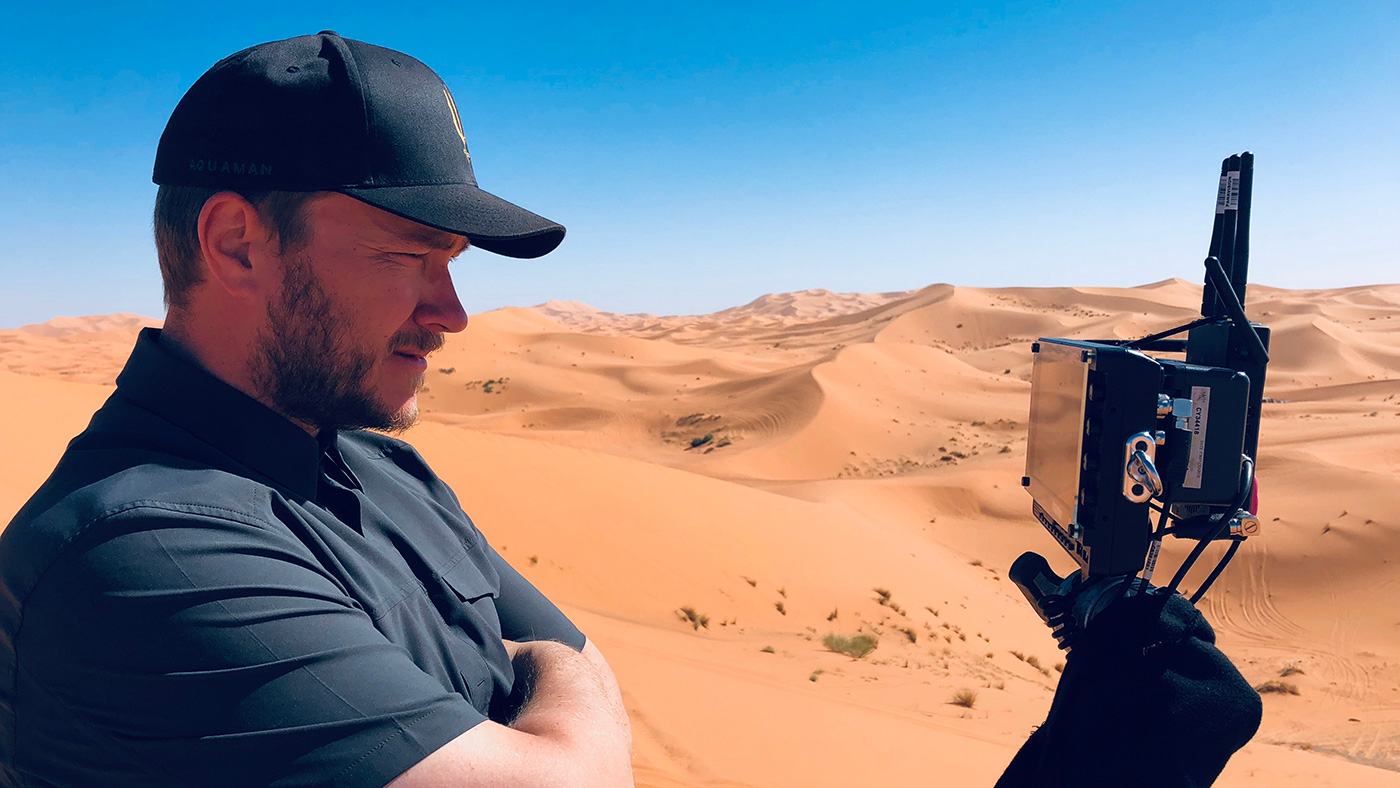In 2017, Kelvin McIlwain explained his work on THE FATE OF THE FURIOUS. He talks to us today about the many challenges on AQUAMAN.
How did you get involved on this show?
I kept in touch with James Wan after doing FURIOUS 7. That show had been a fantastic experience, so when I was contacted by James and Anne Kolbe and Lori Nelson at Warner Brothers to see if I was interested in joining the team on AQUAMAN, I jumped at the opportunity.
How was this new collaboration with director James Wan?
Working with James is always a pleasure. He’s a masterful storyteller with an incredibly deep understanding of the filmmaking craft. There’s also this level of certainty that he has that makes doing my job a lot more pleasurable. The end goal that he is working towards is very well defined.
Can you tell us more about the previz and postviz work?
When I joined the project, Charlie Gibson who I was hired to co-supervise with, had already been on for a few months. He and the team at The Third Floor had a good jump on the previz work but there was still a ton to do as we approached the beginning of principal photography. The previz was absolutely crucial on this movie. It informed all the various departments as to what would be required on a per setup basis. Because we were shooting “dry for wet” for the underwater scenes even the simplest of interactions between characters required extensive planning and coordination. The previz provided the blueprint for the shoot. It was a process that pretty much continued throughout production. At about midway through, the Third Floor team handed off to a smaller previz team at Day for Nite. They were with us pretty much to the end of the shoot.
Postviz was a whole different story. After completion of principle photography, we only had about twelve weeks before the director’s cut was due to be screened for the studio and a test audience. We had been using a virtual production system throughout the shoot that allowed us to visualize the shots in realtime while we were shooting. This also gave editorial representations of the shots to cut with. In the end though, the Producers and James wanted a more finished quality of postiz. Proof provided the bulk of this work on the movie, but we had teams from Halon, The Third Floor, and Day for Nite contributing to the effort as well. It was an “all hands on deck” effort.
Where was filmed the various places in the movie?
All photography involving actors was shot on the Gold Coast of Australia. Along with the Australia unit work, I supervised all of the distant location plate photography as well as directing some 2nd unit work in Newfoundland, Sicily, and Morocco. We spent about a week to ten days in each distant location.
One of the main challenges is to have the actors performing underwater. What was your approach about that?
When I joined the show, Charlie Gibson had already spent a lot of time working on the problem. He, James, and the stunt team had decided to continue with and refine the techniques that John “DJ” Desjardin had developed on JUSTICE LEAGUE. This basically meant puppeteering the actors using various rigs to give them the feel of being buoyant and essentially always swimming underwater. The main rig, and most often used, was what we called the “tuning fork” rig. This rig implemented a wheeled base with a hydraulic vertical axis that had a long pole with a fulcrum in the middle that attached to the actors at the waist on either side with a fork. Hence the name “tuning fork”. If you see a picture of it you’ll get it. I’m not sure if my description does it justice. Anyway, this is how we gave the actors the sense of floating and being able to motivate themselves through the water volume. Logistically it’s a bit of a nightmare. Each actor has to be puppeteered around the environment by their team of stunt guys controlling the rig. The actors essentially had no control of where they were going so they had to be in perfect sync with their stunt team. This required a lot of rehearsal, so everyone was in sync.
How did you create the various digital doubles and their hair simulations?
Creating the digi-doubles is a pretty standard process at this point. All the main actors and even most of the secondary or BG performers were scanned by our team from Clear Angle and built to a very high level of detail. This was super important as there were many shots throughout the movie where characters needed to do physical performances that just weren’t possible with the real performers. There were also instances where we would only keep the head of the actor and replace the entire body to enhance their underwater look and physicality.
Hair was a whole other problem. This proved to be a real significant challenge for all of our vendors. The team at ILM headed by Jeff White and Philippe Rebours spearheaded the effort in look development for the hair on all the characters for the show. They ultimately had to seriously upgrade their hair simulation software due to the unique aspects of hair flowing underwater. Normally hair sims use guide strands to define or influence the movement of groups of hair strands. This didn’t yield a great look for underwater simulation. It looked too chunky and unnatural. In the end Jeff White told me that essentially, they ended up simulating on a per strand basis. This resulted in some seriously heavy computations. On top of that James wanted to be able to direct the hair when the physically accurate simulation resulted in something that he determined wasn’t flattering to the actors. This became a constant headache throughout post-production. We had somewhere in the neighborhood of 700 shots in the movie that required high detail hair sims.
We discover beautiful and also terrifying underwater environments. How did you work with the art department?
Our Production Designer Bill Brzeski is an old friend of mine. We’ve done a bunch of movies together. He had an amazing team of concept designers and artists. Bill and James got together long before I came on the show and developed a look and feel for the world. They had it all mapped out when the movie was greenlit by the studio. It’s pretty much why the studio wanted to make the movie. They made a look book for the movie that is one of the most impressive early design efforts I’ve ever seen. If you ever get to see it, you’ll say “yep, that’s the movie I remember seeing on screen”.
What was the real size of the sets?
That depends. The terrestrial based parts of the movie had quite massive, extensive, and elaborate sets. For the underwater world we used mostly proxy sets that were replaced or were there for the actors and filmmakers to get a sense of the space.
Can you explain in detail about the creation of Atlantis?
Atlantis was a creation that James had very specific ideas about. He wanted it to feel very organic and as if large parts of it were grown instead of built using traditional terrestrial techniques. He also wanted the material qualities to be very much inspired by the aquatic world. Building surfaces are translucent and bioluminescent. Structures are impossibly tall and fragile because they have buoyancy and are not subject to the same laws of gravity that exist in the terrestrial world. It was a design effort by ILM that was started very early on and continued until late in the process when James determined that we had achieved his goal for the city.
The underwater lighting is really challenging. How did you handle this aspect?
On set our Director of Photography, Don Burgess, had a couple of ingenious techniques for creating the underwater caustic quality of light for our actors. He would project the key light through large flat pans filled with water. This gave the light a nice shimmer and organic quality that felt very aquatic. It wasn’t right for all situations but when used it gave a very convincing effect.
For our final composited shots there was always a balance that we were trying to achieve with the light. We needed to see our environments but we also wanted to always provide a hint of the attenuation you get with light scatter and red absorption that the water volume creates.
Can you tell us more about the beautiful photo-luminescent elements?
It was a theme that is pervasive throughout the aquatic creature and environment designs in the movie. James found a lot of inspiration in the bioluminescent flora and fauna of the deep sea world. It’s something that is quite rare in the terrestrial world but quite common in the aquatic realm. It’s something that we leveraged to remind the audience that we were somewhere not often scene.
During the fight against Black Manta in the village, the camera is literally flying to cover the two chases and fights. Can you tell us more about that?
We built the main square for the Italian village and then some tiled rooftop sets. The main square was quite elaborate and extensive. Beyond that it was literally just terracotta tiled roof set pieces that were backed with bluescreen and everything else created in CG. James had location scouted the Sicilian town of Erice early on in preproduction and fell in love with it. After 2nd Unit had wrapped, I went off with my plate team and VFX Supervisor David Nelson from Method Studios to photograph, document, and scan the Italian village. Method basic took all that data and built a beautiful photoreal village that acted as the connective tissue and background for all our photography of the actors and stunt performers. It is really a beautiful example of CG environment execution. It gave us everything we needed to fly the camera around and connect the various pieces of practical photography captured in Australia.
Soldiers are riding sea horses and sharks. How did you create these animals?
This was a high bar that James set for the team. He wanted to take something that was a bit of a joke from the original comic and make it badass and real. I think we succeeded. They were built by ILM from creature designs provided by Sebastian Meyer. I worked with him years ago on SNOW WHITE AND THE HUNTSMAN. His designs are always the best. He really has a fantastic eye for creating outlandish creatures that look and feel totally believable.
There are tons of animals and creatures in the movie. Which one is your favorite?
The Trench were my favorite. Bryan Hirota the VFX Supervisor from Scanline VFX knocked it out of the park on this one. The original concept was that these were going to be practical suits worn by performers, but early on we realized that these creatures needed to be super emaciated and lithe. Something that couldn’t be achieved with a man in a suit. We abandoned the creature suits and had performers in performance capture suits instead. In the end they became mostly keyframe animated creatures in order to get the creepy action that James desired.
How did you design and create the Karathen?
Again, this was a design that James worked out early in preproduction. He knew exactly what he wanted from the beginning. If you compare the end result to his early concepts you’ll see that it’s pretty much a dead match. The only thing that was a bit of an issue was that he kept telling us that we weren’t making it big enough. He kept pushing the ILM team to make it bigger. In the end I think it worked out to be something like 2km in length. Crazy.
The final battle have countless armies and a massive Karathen. How did you approach the choreography of such massive shots?
I have to give props to Cedric Lo at ILM for getting all the final choreography worked out as it was quite a challenge. The team at Halon worked out the initial previz blocking for the battle but it became super important in the end that the viewer not get lost in the action. I think that Jeff White and Cedric did a masterful job of creating a battle that had little geography to ground the viewer but was still understandable. When the battle leaves the seafloor and raises up into the abyss of the water column they used elements in the background to trace perspective lines that gave structure to the environment and allowed you to keep perspective on the battle. It worked really well and I have to give credit to James Wan on that as it was his idea on a way to give structure to an environment that really doesn’t have any natively.
Can you tell us how you choose the various VFX vendors?
It’s always a challenge these days. There’s so much demand for VFX work and it is starting to outpace the supply. We were lucky to secure ILM, Scanline, Method, MPC, and Rodeo FX. We got them on board early in the process and assigned sequences that played to their strengths. It was an ideal allotment of the work.
Can you tell us more about your collaboration with their VFX supervisors?
Yes, I can tell you that I couldn’t have done it without them. They are such key players. Jeff White, Philippe Rebours, Bryan Hirota, David Nelson, Josh Simmonds, Craig Wentworth, Damien Stumpf, Pier Lefebvre, and Sebastien Moreau were all key to the success of this film. I’m very grateful for their efforts.
The vendors are all around the world. How did you proceed to follow their work?
I had very little sleep. I’m still exhausted to this day. It would be much easier if everyone was in the same timezone.
Which sequence or shot was the most complicated to create and why?
Honestly, there were too many difficult sequences in this movie to make that determination. It was just flat out hard across the board. Sorry to sound dramatic but it’s the truth.
Is there something specific that gives you some really short nights?
All of it. I didn’t get much sleep. What’s sleep?
What is your favorite shot or sequence?
The Trench, to be honest. It was fun to develop and really turned out great.
What is your best memory on this show?
Wow. That’s really hard to quantify. It was a fantastic experience throughout. Ultimately though, I would have to say the plate unit shoots in Newfoundland, Sicily, and Morocco. I planned and executed all that work and I love aerial photography from a helicopter. That’s the best.
How long have you worked on this show?
I was on the show for a little over 20 months.
What’s the VFX shots count?
I was just a touch under 2300 VFX shots that ended up in the final cut. At one point in post we were tracking in excess of 3000 shots.
What was the size of your on-set team?
It all depended on how many units we had going at any one time. There were times when we had Main Unit, 2nd Unit, and two splinter units going all at once. Between the dedicated production team and the additional vendor support it could be as many as 16-20 people, if you include the virtual production team.
What is your next project?
I’m already on it. I’m helping out my old friend and VFX Supervisor Mike Wassel on SHAZAM!. People are going to love this movie!!!
A big thanks for your time.
© Vincent Frei – The Art of VFX – 2019


